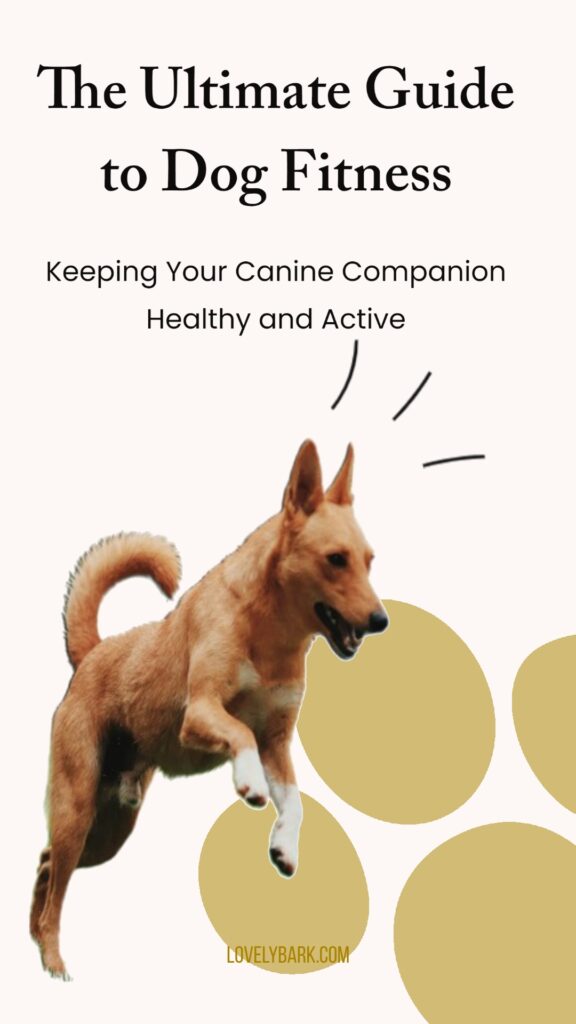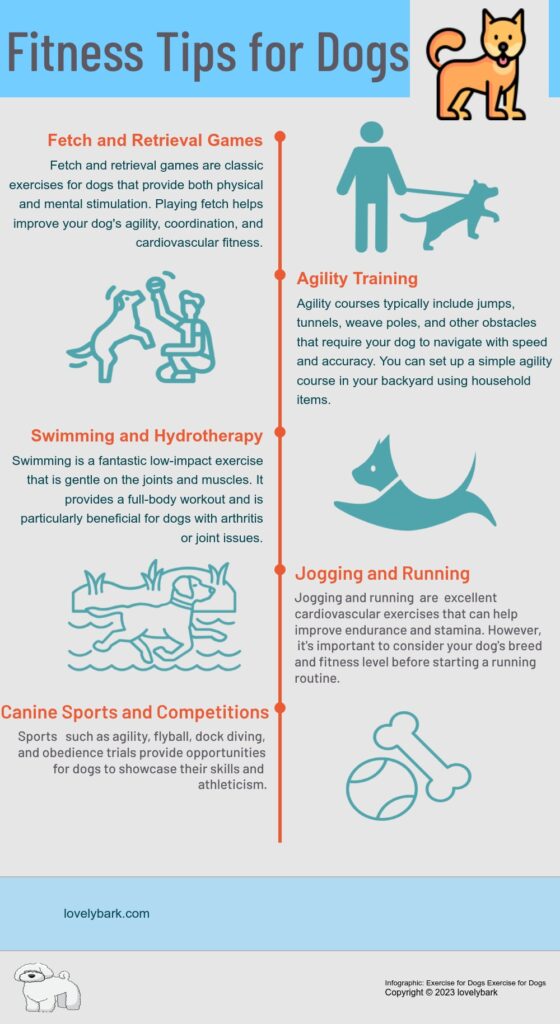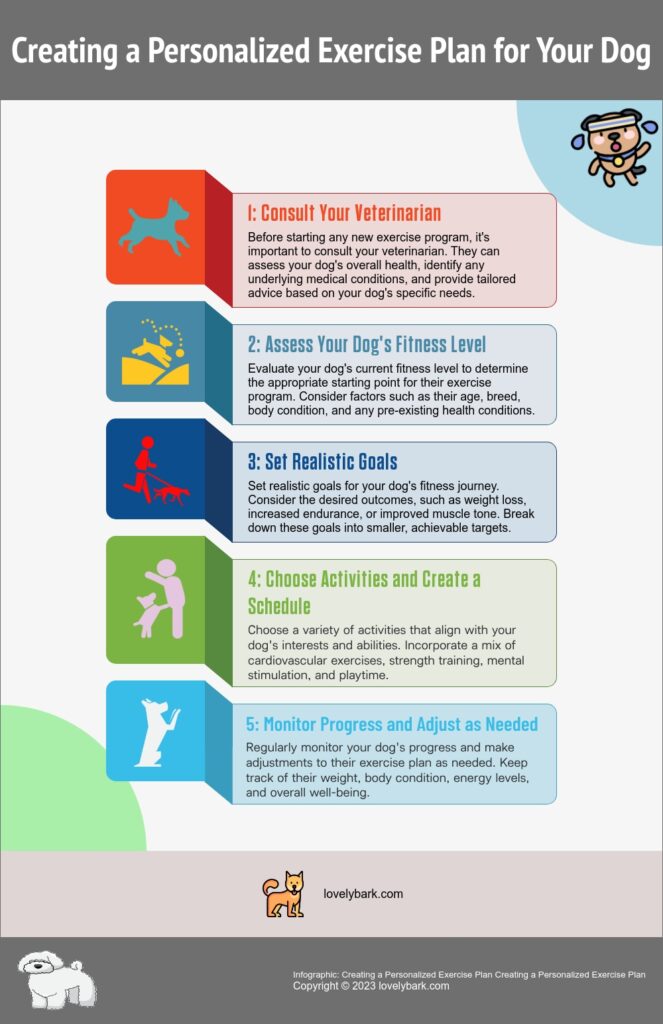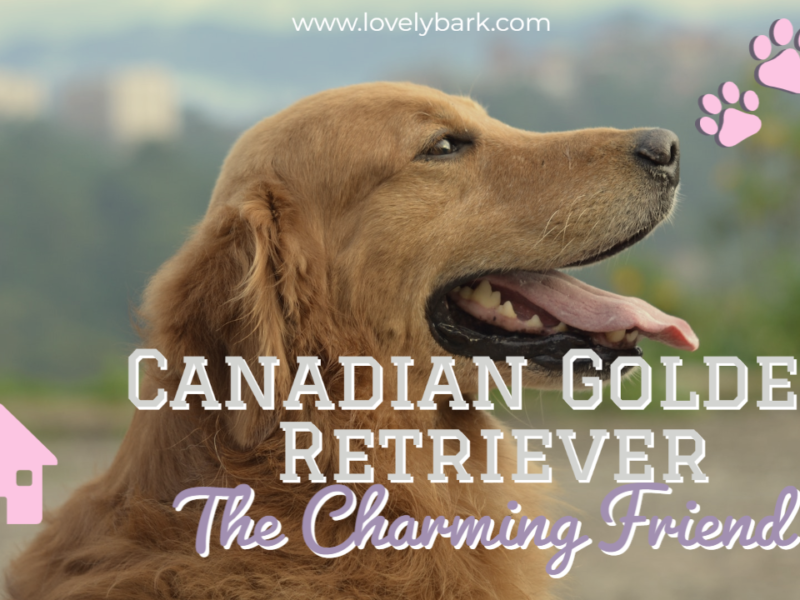Table of Contents

Why is Dog Fitness Important?
Physical fitness is crucial for dogs of all ages and breeds. Regular exercise helps to maintain a healthy weight, increase cardiovascular health, improve muscle tone, enhance joint flexibility, and boost mental stimulation. It also provides an outlet for your dog’s energy and helps prevent behavioral issues that may arise from pent-up energy and boredom. Additionally, exercise is a great way to strengthen the bond between you and your dog, as it provides opportunities for quality time and shared experiences. So, let’s explore the various ways to keep your dog fit and active!Assessing Your Dog’s Health and Fitness Level
Before starting any exercise program for your dog, it’s important to assess their overall health and fitness level. This will help you determine the most appropriate activities and intensity for your furry friend. Here are some key factors to consider:Age, Body Condition, and Health Status
Just like humans, dogs have different exercise needs based on their age, body condition, and health status. Puppies have growing bones and should avoid high-impact activities that could potentially cause skeletal trauma. Short-snouted breeds, such as pugs or bulldogs, may have different cardiovascular needs compared to breeds with longer muzzles. Overweight or obese dogs are more prone to joint injuries, so their exercise plan should focus on low-impact activities that gradually increase in intensity. It’s always best to consult with your veterinarian to determine the most suitable exercise regimen for your dog based on their individual characteristics.Your Dog’s Preferences and Interests
Every dog has their own unique personality and preferences. Some dogs love to run and play fetch, while others enjoy swimming or agility training. It’s important to consider your dog’s interests when designing their exercise routine. Engaging in activities that your dog enjoys will not only make exercise more enjoyable for them but also increase their motivation to participate. Whether it’s a game of fetch, a swim in the lake, or a challenging obstacle course, find activities that bring joy to both you and your furry friend.Your Own Interests and Abilities
When creating a fitness plan for your dog, it’s essential to consider your own interests and abilities. You are your dog’s primary exercise partner, so it’s crucial to choose activities that you enjoy and can sustain in the long run. If you’re an avid runner, taking your dog for a jog or a run can be a great way to stay active together. If you prefer more leisurely walks, opt for longer walks or hikes in nature. By aligning your own interests with your dog’s exercise routine, you’ll be more likely to stick to the plan and create a stronger bond with your furry companion.Duration and Intensity of Exercise
The duration and intensity of exercise depend on your dog’s current fitness level. It’s important to start slow and gradually increase the duration and intensity of exercise over time. A 20-minute walk every day is better than a 2-hour walk once a week. Consistency is key when it comes to maintaining your dog’s fitness. Pay attention to your dog’s energy levels and comfort during exercise. If they become excessively tired or show signs of discomfort, it’s important to take a break and adjust the intensity accordingly. Always listen to your dog’s body and make modifications as needed.
Types of Exercise for Dogs
Now that we’ve covered the importance of dog fitness and how to assess your dog’s health and fitness level, let’s explore different types of exercise that can help keep your furry friend fit and active. Remember to choose activities that align with your dog’s interests and abilities, and consult your veterinarian if you have any concerns or questions.Walking and Power Walking
Walking is one of the simplest and most accessible forms of exercise for dogs. It’s a low-impact activity that provides mental stimulation and helps maintain a healthy weight. Regular walks also help improve cardiovascular health and strengthen muscles. Aim for at least 30 minutes of walking per day, divided into multiple sessions if needed. If you and your dog are up for a more challenging workout, consider power walking. Power walking involves maintaining a brisk pace, which increases your heart rate and provides a more intense workout for both you and your dog.Jogging and Running
If you’re a fan of running, why not bring your dog along for a jog or run? Jogging and running are excellent cardiovascular exercises that can help improve endurance and stamina. However, it’s important to consider your dog’s breed and fitness level before starting a running routine. Some breeds are better suited for long-distance running, while others may have limitations due to their size or breed characteristics. Start with short jogs and gradually increase the distance and intensity over time. Remember to pay attention to your dog’s energy levels and adjust the pace accordingly.Swimming and Hydrotherapy
Swimming is a fantastic low-impact exercise that is gentle on the joints and muscles. It provides a full-body workout and is particularly beneficial for dogs with arthritis or joint issues. If your dog enjoys swimming, consider incorporating regular swimming sessions into their exercise routine. If you don’t have access to a pool or a safe body of water, hydrotherapy can be a great alternative. Hydrotherapy involves using underwater treadmills or controlled swimming in a therapeutic environment. Consult your veterinarian or a certified canine hydrotherapist to determine if hydrotherapy is suitable for your dog.Fetch and Retrieval Games
Fetch and retrieval games are classic exercises for dogs that provide both physical and mental stimulation. Playing fetch helps improve your dog’s agility, coordination, and cardiovascular fitness. It’s a great way to engage with your dog and strengthen the bond between you. Start by teaching your dog to retrieve and gradually increase the distance and difficulty of the throws. Use toys or balls specifically designed for dogs to ensure their safety. Remember to choose an appropriate location for fetch games, considering factors such as space, safety, and the presence of other people or animals.Agility Training
Agility training is a fun and challenging activity that involves navigating through an obstacle course. It helps improve your dog’s coordination, balance, and problem-solving skills. Agility courses typically include jumps, tunnels, weave poles, and other obstacles that require your dog to navigate with speed and accuracy. You can set up a simple agility course in your backyard using household items or consider joining a local agility club for more structured training. Always start with basic exercises and gradually increase the difficulty level as your dog becomes more proficient.Interactive Toys and Puzzle Games
Interactive toys and puzzle games are a great way to keep your dog mentally stimulated while providing a moderate level of physical activity. These toys require your dog to use their problem-solving skills to access treats or toys hidden within the puzzle. They promote mental engagement and help prevent boredom, which can lead to destructive behaviors. There are various types of interactive toys available, including treat-dispensing toys, puzzle feeders, and hide-and-seek games. Choose toys that are safe and durable, and supervise your dog while playing with interactive toys to ensure their safety.Canine Sports and Competitions
For dogs and owners looking for a more competitive and challenging form of exercise, participating in canine sports and competitions can be a great option. Sports such as agility, flyball, dock diving, and obedience trials provide opportunities for dogs to showcase their skills and athleticism. These activities require training and dedication but can be incredibly rewarding for both you and your dog. Research local clubs or organizations that offer training and competitions in your area. Remember to start with basic training and gradually progress to more advanced exercises as your dog’s skills improve.Obedience Training and Mental Stimulation
Obedience training is an essential part of a dog’s overall well-being. It provides mental stimulation, improves communication between you and your dog, and helps establish boundaries and rules. Incorporate training sessions into your dog’s daily routine to keep their minds sharp and engaged. Basic obedience commands such as sit, stay, and come are fundamental building blocks for a well-behaved dog. Advanced training exercises, such as agility drills or scent work, can provide additional mental and physical challenges. Remember to use positive reinforcement techniques and make training sessions fun and rewarding for your dog.
Creating a Personalized Exercise Plan
Now that you have a better understanding of the different types of exercise for dogs, it’s time to create a personalized exercise plan for your furry friend. Here are some steps to help you get started:Step 1: Consult Your Veterinarian
Before starting any new exercise program, it’s important to consult your veterinarian. They can assess your dog’s overall health, identify any underlying medical conditions, and provide tailored advice based on your dog’s specific needs. Your veterinarian can also help determine the appropriate duration, intensity, and frequency of exercise for your dog. They may recommend additional tests or screenings to ensure your dog is in good physical shape to engage in regular exercise.Step 2: Assess Your Dog’s Fitness Level
Evaluate your dog’s current fitness level to determine the appropriate starting point for their exercise program. Consider factors such as their age, breed, body condition, and any pre-existing health conditions. Start with low-impact activities and gradually increase the duration and intensity of exercise over time. Pay attention to your dog’s energy levels, breathing rate, and overall comfort during exercise. If your dog shows signs of fatigue or discomfort, take a break and adjust the exercise accordingly. AKC in this regard, explores in detail “How Much Exercise Does a Dog Need Every Day“.Step 3: Set Realistic Goals
Set realistic goals for your dog’s fitness journey. Consider the desired outcomes, such as weight loss, increased endurance, or improved muscle tone. Break down these goals into smaller, achievable targets. For example, aim for a certain number of minutes or miles walked per day, or gradually increase the number of repetitions or difficulty level of training exercises. Celebrate each milestone and adjust the goals as your dog progresses.Step 4: Choose Activities and Create a Schedule
Choose a variety of activities that align with your dog’s interests and abilities. Incorporate a mix of cardiovascular exercises, strength training, mental stimulation, and playtime. Create a weekly exercise schedule that includes different types of activities on different days. This will keep your dog engaged and prevent boredom. Remember to include rest days to allow your dog’s muscles to recover and rejuvenate.Step 5: Monitor Progress and Adjust as Needed
Regularly monitor your dog’s progress and make adjustments to their exercise plan as needed. Keep track of their weight, body condition, energy levels, and overall well-being. If you notice any significant changes or concerns, consult your veterinarian for guidance. As your dog becomes fitter and more accustomed to exercise, you can gradually increase the duration or intensity of their workouts. Always prioritize safety and listen to your dog’s cues.
Tips for a Successful Dog Fitness Journey
To ensure a successful dog fitness journey, keep the following tips in mind:Warm-Up and Cool-Down
Just like humans, dogs benefit from warm-up and cool-down exercises. Before starting any intense activity, take a few minutes to warm up your dog’s muscles by engaging in gentle movements or stretching exercises. After the workout, allow your dog to cool down gradually by slowing down the pace and engaging in light exercises or stretching.Stay Hydrated
Always provide access to fresh water before, during, and after exercise. Hydration is essential to keep your dog’s body temperature regulated and to prevent dehydration. Carry a portable water bottle and a collapsible bowl when going on long walks or hikes. Monitor your dog’s water intake and adjust accordingly based on the intensity and duration of exercise.Use Proper Gear and Equipment
Invest in high-quality gear and equipment to ensure your dog’s safety and comfort during exercise. Use a properly fitted collar, harness, or head halter that provides control without causing discomfort. Consider using reflective or LED gear for walks during low-light conditions. If engaging in water activities, use a life jacket designed specifically for dogs. Choose toys and equipment that are safe, durable, and appropriate for your dog’s size and breed.Be Mindful of the Weather
Pay attention to the weather conditions when planning your dog’s exercise routine. Avoid exercising during extreme heat or cold, as it can be dangerous for your dog’s health. Exercise during the early morning or late evening when temperatures are cooler. On hot days, walk on shaded trails or near bodies of water to keep your dog cool. In colder weather, consider using doggy boots or protective clothing to keep your dog warm and comfortable.Regular Veterinary Check-ups
Schedule regular veterinary check-ups to monitor your dog’s overall health and well-being. Your veterinarian can assess their fitness progress, identify any potential issues, and provide guidance on adjusting their exercise routine if necessary. Regular vaccinations, parasite prevention, and dental care are also essential for maintaining your dog’s health and ensuring they can engage in regular exercise.Have Fun and Bond with Your Dog
The most important aspect of dog fitness is to have fun and strengthen the bond between you and your furry friend. Enjoy the time you spend together during exercise and make it a positive and rewarding experience for both of you. Use treats, praise, and playtime as rewards for your dog’s efforts. Take breaks to engage in interactive play or simply cuddle and relax together. Remember, the journey is just as important as the destination.Conclusion
Keeping your dog fit and active is essential for their overall health and well-being. Regular exercise provides numerous physical and mental benefits, strengthens the bond between you and your dog, and promotes a happy and fulfilling life for both of you. By assessing your dog’s health and fitness level, choosing appropriate activities, and creating a personalized exercise plan, you can ensure a successful dog fitness journey. Remember to consult your veterinarian, monitor your dog’s progress, and make adjustments as needed. With dedication, consistency, and a whole lot of fun, you and your dog can embark on an exciting fitness adventure together. So get out there, explore new activities, and enjoy the journey to a healthier and happier dog!”FAQs”
What does fit dog mean ?
If their body language is relaxed and welcoming, that's a good sign. One of the easiest signs to tell whether or not a dog feels safe around you is to check their body language. A dog that feels comfortable around you will have a more relaxed body language, allowing you to pet them and play with them.
How to exercise working dogs ?
What breed are they? Your dog's breed plays a large part in their natural energy levels. Some need 1-2 hours of exercise per day, others need more than 2 hours, and some – mostly working breeds – need significantly more, plus mental stimulation throughout the day.
How much exercise my dog need ?
The amount of exercise a dog requires daily to stay healthy depends on many different factors, such as breed, age, size, body type, and overall health. A general rule of thumb is that dogs should get between 30 minutes and 2 hours of exercise every day.
How often exercise dog ?
A general rule of thumb is that dogs should get between 30 minutes and 2 hours of exercise every day. Larger breed dogs, like retrievers, collies, and shepherds will need the most exercise; while smaller and toy breed dogs, like terriers and Maltese, don't require as much daily physical activity.


